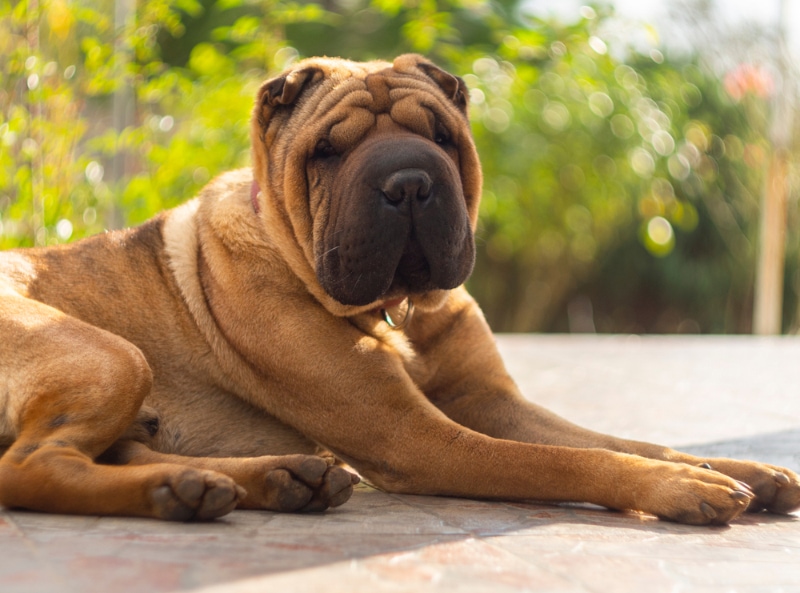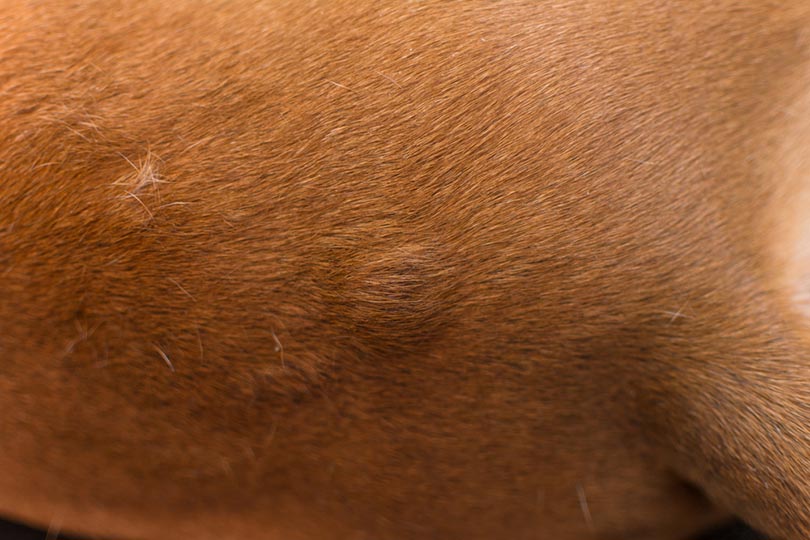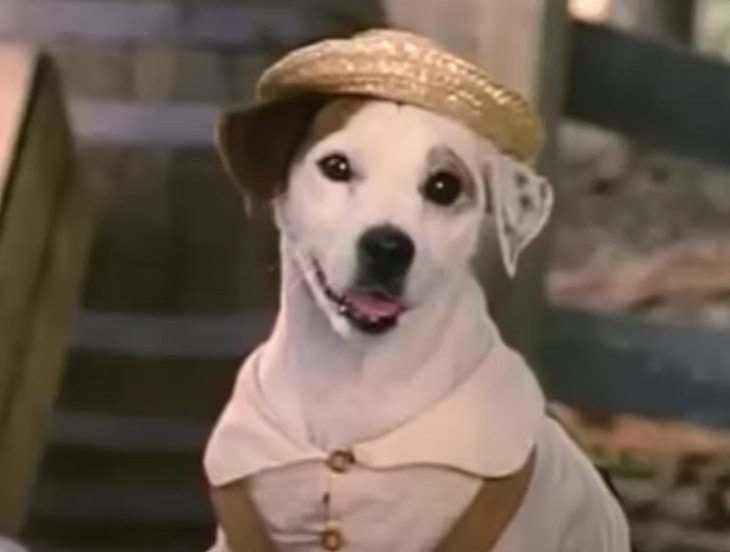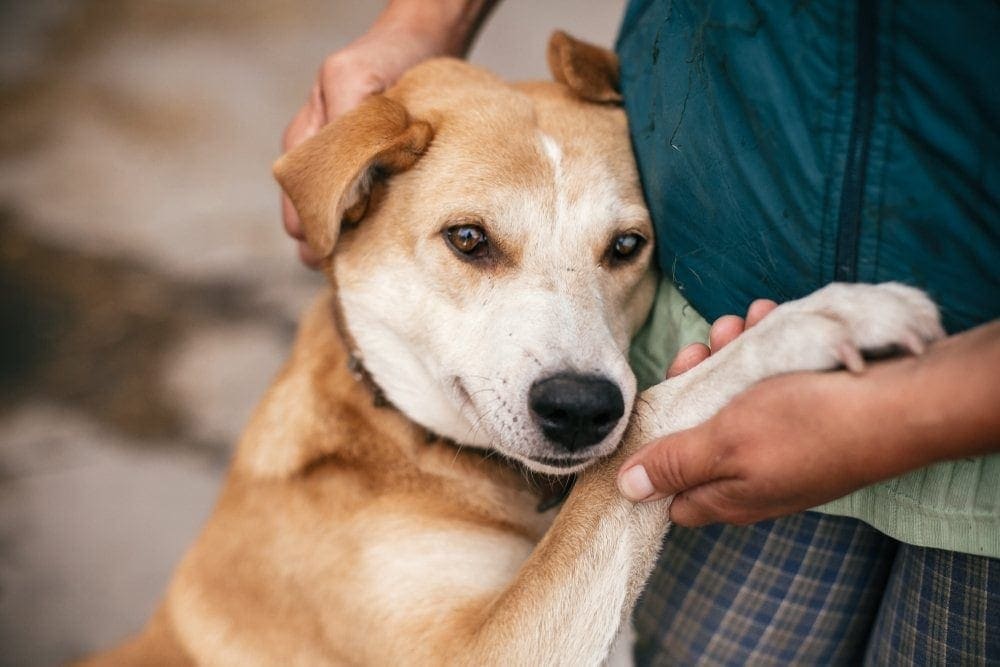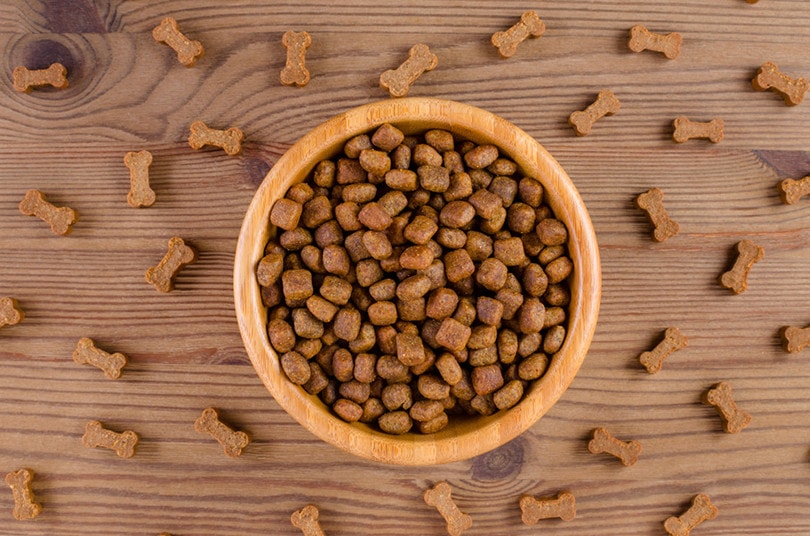17 Short-Haired Dog Breeds (with Pictures)
Updated on
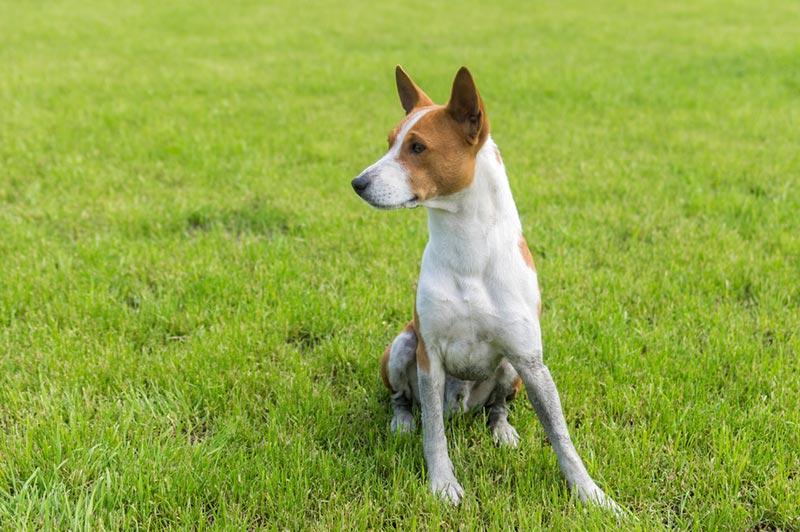
Short-haired dogs are typically low-maintenance and require less grooming than long-haired dogs (though this isn’t always the case). Therefore, short-haired dogs have become quite popular over the years.
There are many short-haired breeds that you’ve probably heard of, such as the Dalmatian and Boxer. However, there are also several that you may not have heard of, like the German Pinscher.
Below, we’ll go over some of the most popular short-haired dog breeds.
The 17 Short-Haired Dog Breeds
1. Beagle
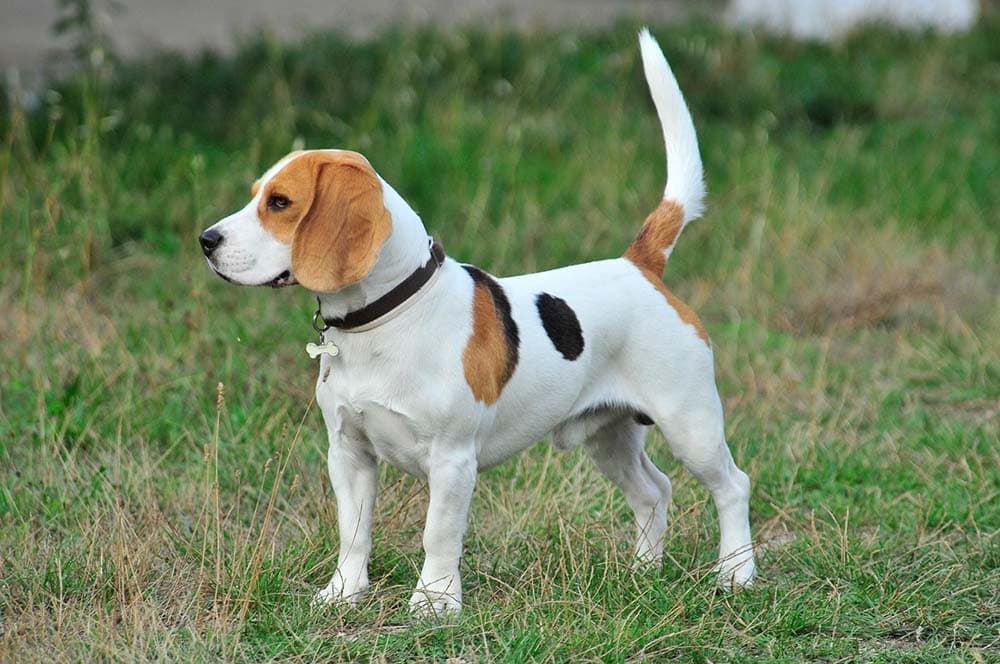
Beagles are known for their baying howl and strong noses. As hunting dogs, they were bred to track rabbits through dense undergrowth and “flush” them. They originated in England, but their easy-to-care-for coats have made them pretty popular today. They’re friendly, laidback dogs that are affectionate with just about anyone.
These canines make a good choice for families, especially those with children. However, they can be stubborn and difficult to train like most hounds and you’ll need to provide consistent training. (Luckily, they are extremely food-driven.)
2. Boston Terrier
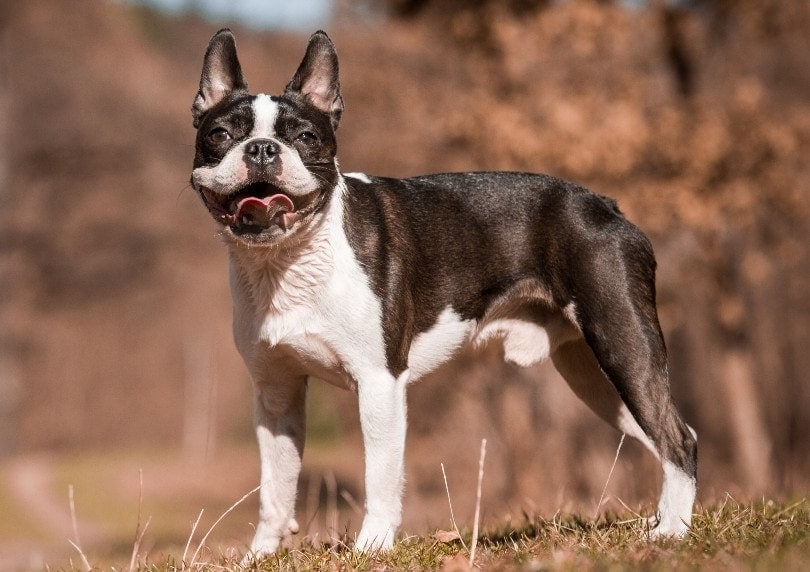
The Boston Terrier is a small, non-sporting dog from the United States. They were bred specifically to be companion dogs, so they have a lot of traits often appreciated by families. Their affectionate, friendly, and playful, for instance. They’re often called the “American Gentleman” due to their temperament.
These intelligent, eager-to-please dogs are also easy to train, though they may be independent at times.
They’re generally good with children, other pets, and strangers. However, they may not like rough play or larger dogs. Their shortened snout also makes them prone to health issues, including eye disorders and breathing difficulties.
3. Boxer
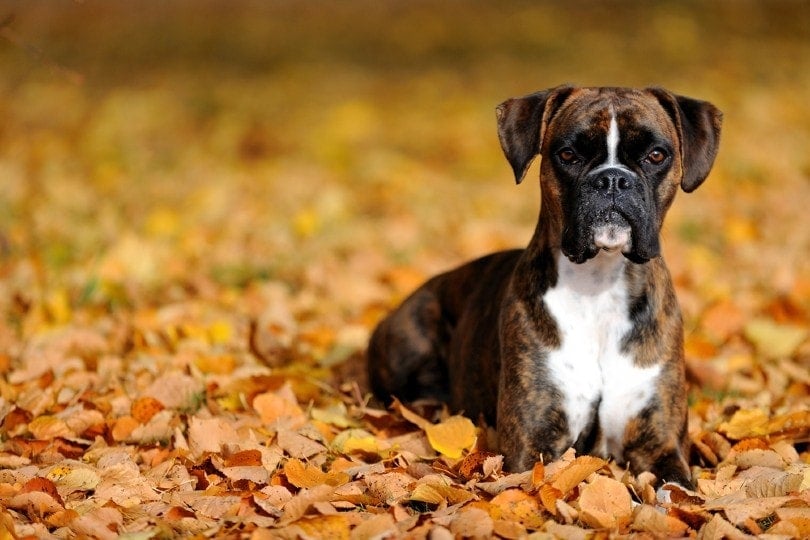
Boxers are medium-sized dogs with very short fur. They’re related to other mastiffs, though they are much smaller than most. They can either be fawn or brindle, and many have white markings (though this isn’t required).
These canines are often fun-loving and intelligent. They bond closely with their families and are delightfully silly. However, when things get serious, they can also be quite brave.
They do require a lot of exercise and mental stimulation, though. Otherwise, they can easily become bored and destructive. They are very good with children and other pets, though they can be wary of strangers. They take their job as family guardians very seriously.
4. Dalmatian
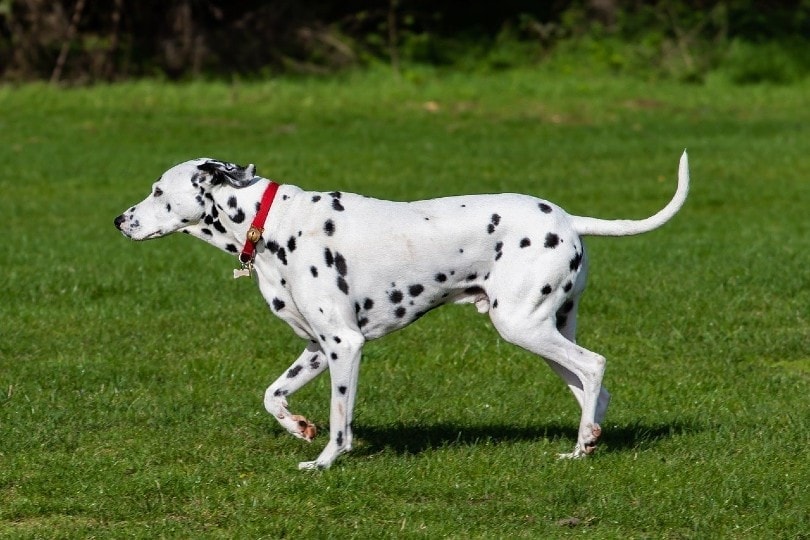
Dalmatians are extremely well-known dogs, despite not being hugely popular (thanks to the Disney movie, most likely). They’re white with black spots that develop a few weeks after birth. They shed very heavily and need frequent brushing, so they are higher maintenance than most short-haired dogs.
This breed is often described as “dignified.” They bond closely with their family, but they may be unsure of strangers. They’re often playful and alert with lots of intelligence.
As they were built to work, these dogs need a lot of exercise and mental stimulation. They must be trained with positive reinforcement and require plenty of stimulation. These canines are extremely good with children and other pets. However, they often don’t enjoy rough play.
5. German Pinscher
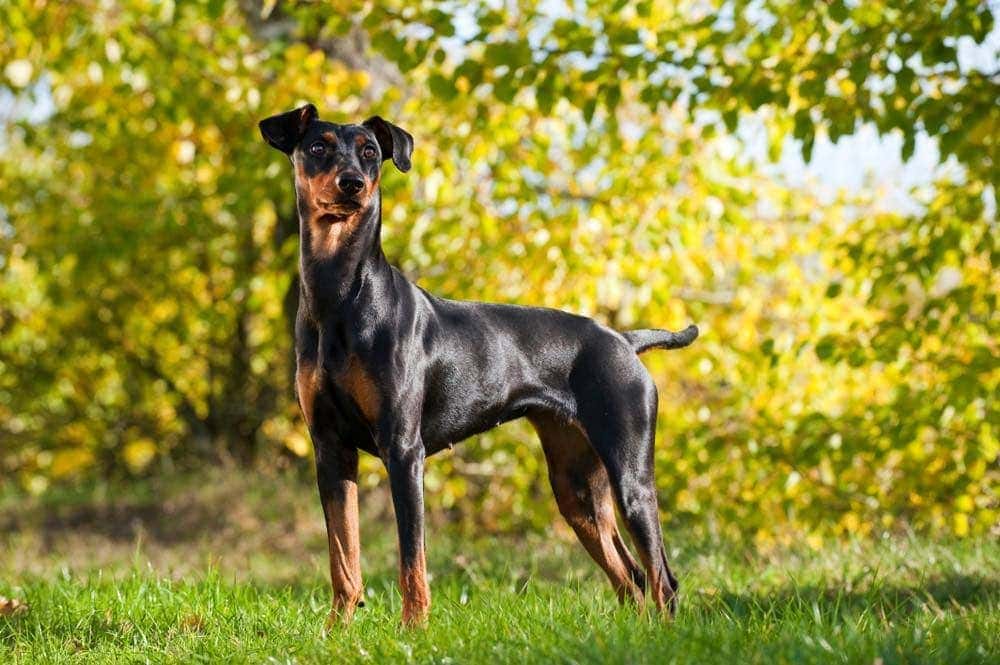
The German Pinscher—a medium-sized terrier breed—is native to Germany, where it shares a common origin with the Schnauzer. They have dense, short coats that are either black and tan or red (though the shade of red can vary a lot).
These canines are extremely intelligent and vivacious. They’re pretty affectionate with their family and very loyal. However, they aren’t the friendliest with strangers and may take up the role of family guardian.
They are extremely active and energetic, requiring plenty of exercise. Otherwise, they can quickly become bored and destructive. They’re often good with children and other pets, but they can be a bit territorial with other dogs. They’re prone to a range of health problems, including hip dysplasia and eye disorders.
6. Greyhound
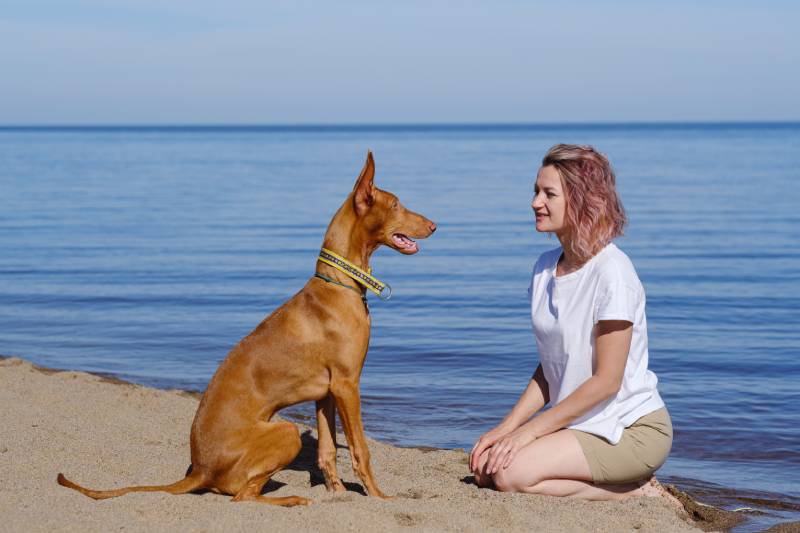
Greyhounds are a lithe, agile breed that’s well-known throughout much of the world (largely thanks to their use in coursing). They’re a sighthound, which means that they were made to chase things. Originally, this was game. However, today, they often chase during racing.
The Greyhound is athletic, graceful, and fast. It can reach speeds of up to 40 miles per hour when running. They need moderate exercise and mental stimulation to prevent boredom and anxiety. They can be trained with positive reinforcement and patience but may also be stubborn and easily distracted.
This breed is often described as gentle and intelligent. They can be extremely affectionate with their owners, though they may be shy towards strangers. Early socialization is essential to keep them from becoming fearful of strangers. While they’re often good with children and other pets, they’re prone to chasing fast-moving objects (something to keep in mind with small pets and children).
7. Italian Greyhound
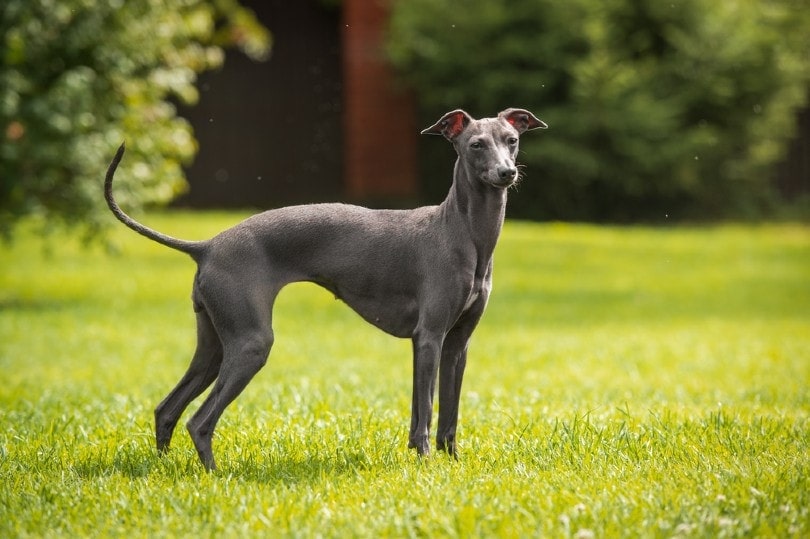
Italian Greyhounds are very similar to “regular” Greyhounds. However, they are much smaller. They basically look like smaller versions of the full-sized Greyhound. Despite this, they have been their own breed for nearly 2,000 years. Therefore, they aren’t simply a smaller version of their bigger cousins.
They’re often described as affectionate and playful and they’re sociable with their family. They can be shy or fearful of others, requiring plenty of socialization to prevent these behavior problems.
While these dogs can run very fast, they don’t need excessive exercise. They often run very fast for a few minutes and then spend the rest of the day lying on the couch. Their stamina is pretty low. The Italian Greyhound is good with children and other pets but may be instinctively driven to chase small animals or moving objects.
8. Labrador Retriever
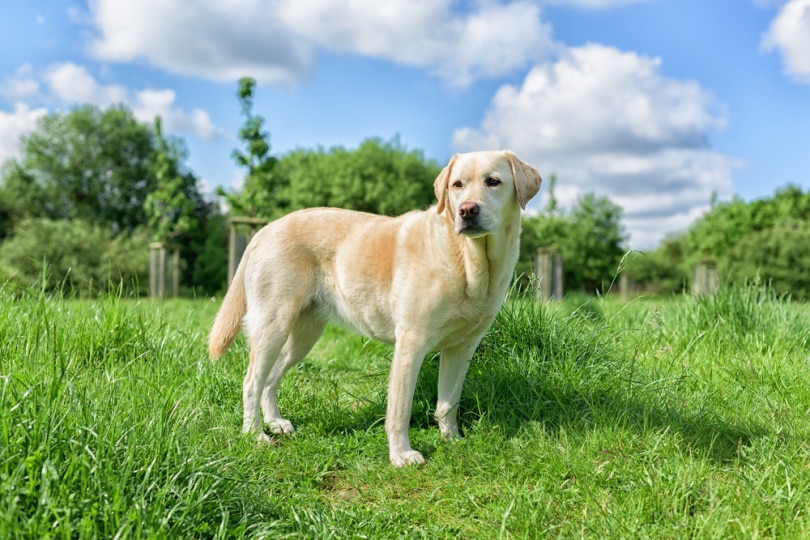
The Labrador Retriever is a short-haired dog breed that can get much larger than most breeds on their list. They have a dense, hard coat that sheds moderately and needs plenty of brushing, so they may not be as low-maintenance as most short-haired breeds.
This breed comes in black, yellow, or chocolate. They have black or brown noses and a broad head. They also have an “otter tail” that helps propel them in the water. The Labrador retriever tends to be friendly and high-spirited. They’re very loyal and affectionate with their family, though they’re often friendly with strangers, too.
However, they also require a lot of mental stimulation and exercise. They do best when given a job to do and make outstanding gun dogs.
9. Mastiff
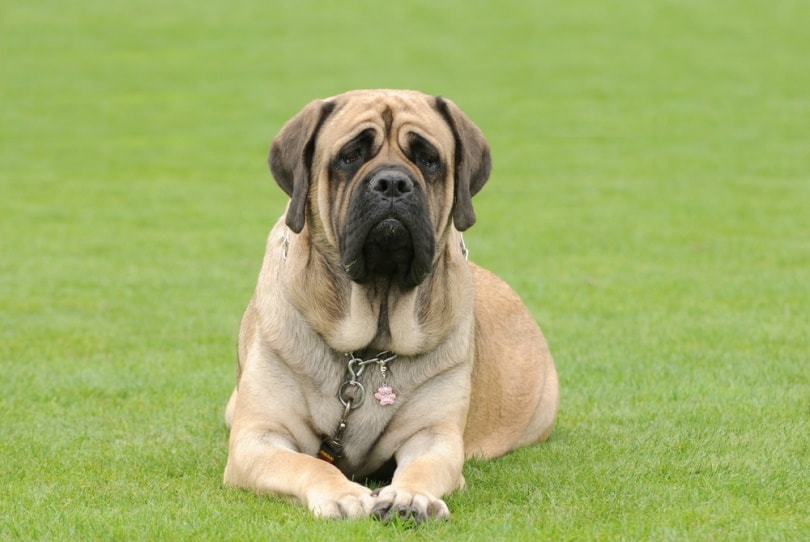
The Mastiff is one of the oldest dog breeds in the world and was utilized for guarding and hunting. They shed moderately, so they require at least some regular brushing.
These canines are good-natured and courageous. They’re very friendly towards their family, but they are also very protective. Therefore, they require lots of socialization and training to accept family, friends, and strangers.
They’re bright, active dogs that need a bit of exercise. They can also become bored easily and are prone to obesity, so special care needs to be taken in this regard. They make great guard dogs.
10. Miniature Pinscher

The Miniature Pinscher is just what it sounds like—a very small Pinscher. They originated in Germany and were created by mixing German Pinschers with Italian Greyhounds and Dachshunds. They were originally used for hunting rats and other small animals. They look very much like tiny versions of the German Pinscher.
These canines are fearless and proud. They’re extremely affectionate with their family and loyal. However, they can also be independent and self-possessed. They tend to do what they want to do.
They are very active and intelligent dogs, prone to bouts of boredom. Therefore, you need to provide plenty of mental stimulation and exercise. They often take well to training, though they require lots of positive reinforcement and consistency.
11. Weimaraner
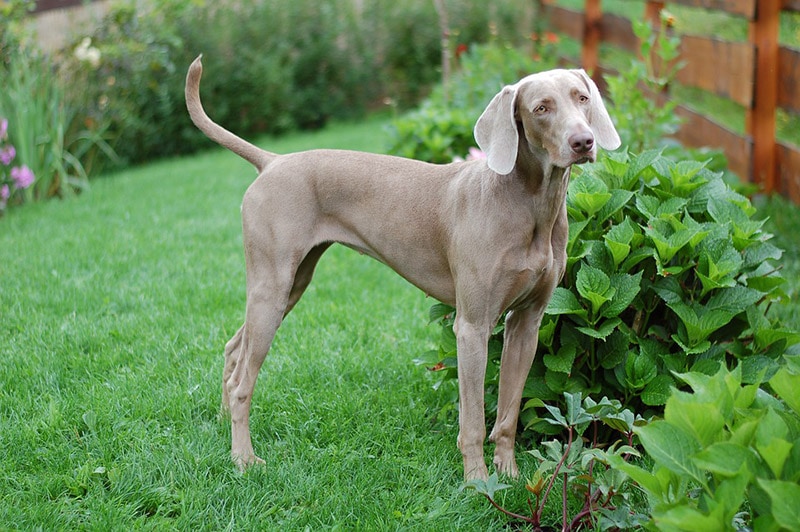
The Weimaraner is a grey, short-haired dog that was originally used by noblemen for hunting purposes, especially deer, boar, and bears. They shed moderately and need occasional grooming. However, for the most part, they don’t require much maintenance.
These canines are extremely friendly and often described as “fearless.” They’re loyal and affectionate to their family, but they can also be quite independent. They’re alert and watchful, though they aren’t known for being guard dogs.
They’re very active and require a lot of exercise otherwise, they may become bored and anxious. Positive reinforcement is a must while training, as they can be stubborn at times.
12. Whippet
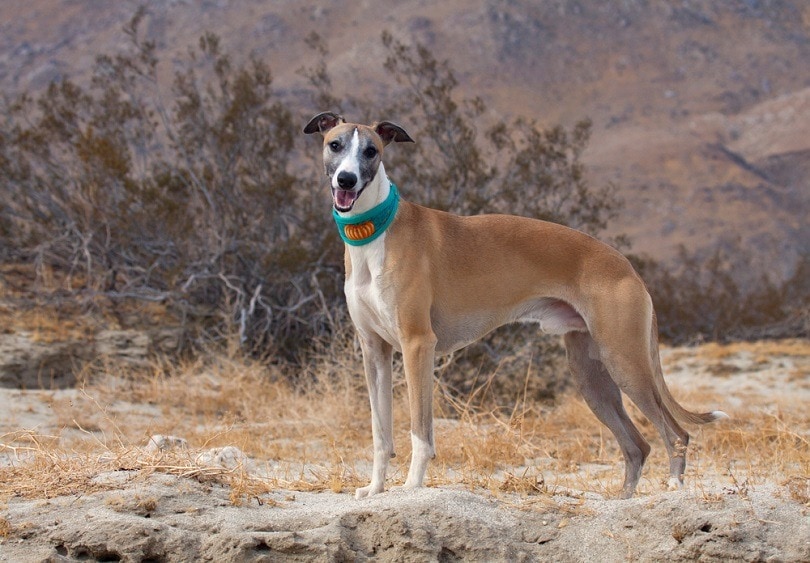
Whippets are medium-sized dogs with very short coats. They were developed by crossing Greyhounds with smaller terriers with the intent of using them to hunt rabbits and other small game. They shed minimally, though they do need some occasional grooming.
They’re often described as playful and affectionate. However, they are also calm and not nearly as hyperactive as you might expect. They’re quite gentle and loyal to their family, though they can be reserved with strangers.
As you might expect, these dogs require plenty of exercise, as they are quite active. They must also be given some mental stimulation, or they can easily (and quickly) become bored. They’re trained best with positive reinforcement and lots of patience, as they can be easily distracted.
13. Great Dane
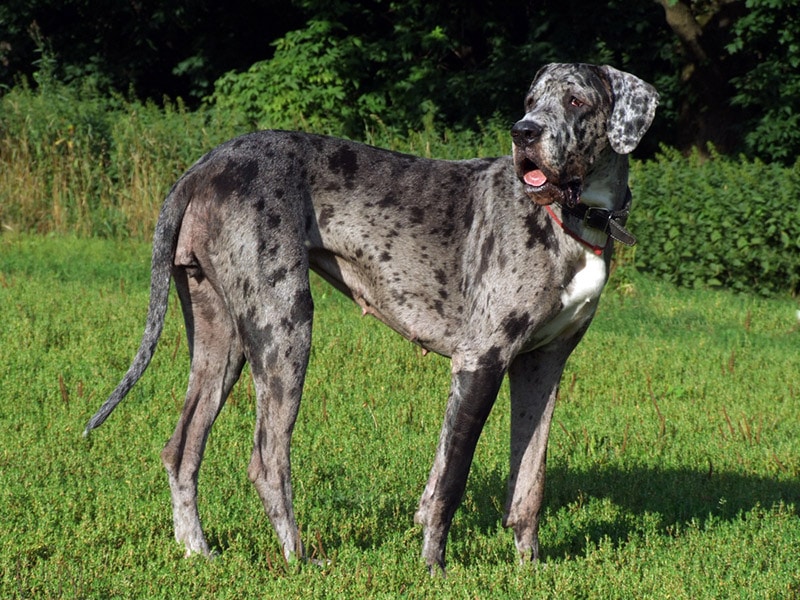
Great Danes are well-known, largely because they are so big. They fall into the mastiff-sighthound category and originally came from Germany. They were used as hunting dogs for wild boar and other large animals.
These dogs are extremely gentle despite their large size. They’re good-natured and very affectionate. However, they may be overly protective if not carefully socialized. Therefore, it is extremely important that they’re trained and socialized well—if only because they are quite a bit bigger than most other dogs.
Great Danes are active and energetic. They require a decent amount of exercise, which takes a lot of room. If not exercised properly, they are prone to obesity. They can also be prone to chewing and are very food-motivated (which can be a good thing and a bad thing).
14. Boerboel
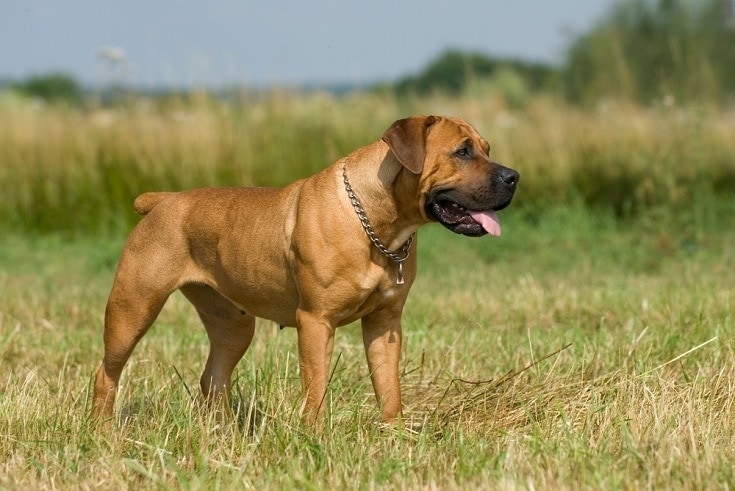
These large, powerful mastiff-type dogs originated in South Africa. They were developed by crossbreeding mastiffs, bulldogs, and other local dogs. They were used for guarding and hunting on remote estates and farms.
The Boerboel is confident and calm. They’re very loyal, intelligent, and protective of their family. They make very good guard dogs in many situations. They’re often rather playful, but they can also be serious when needed.
This breed is extremely energetic and active. They need a lot of exercise and training to stay happy and healthy, as they are a working breed that requires plenty of mental stimulation.
15. Basenji
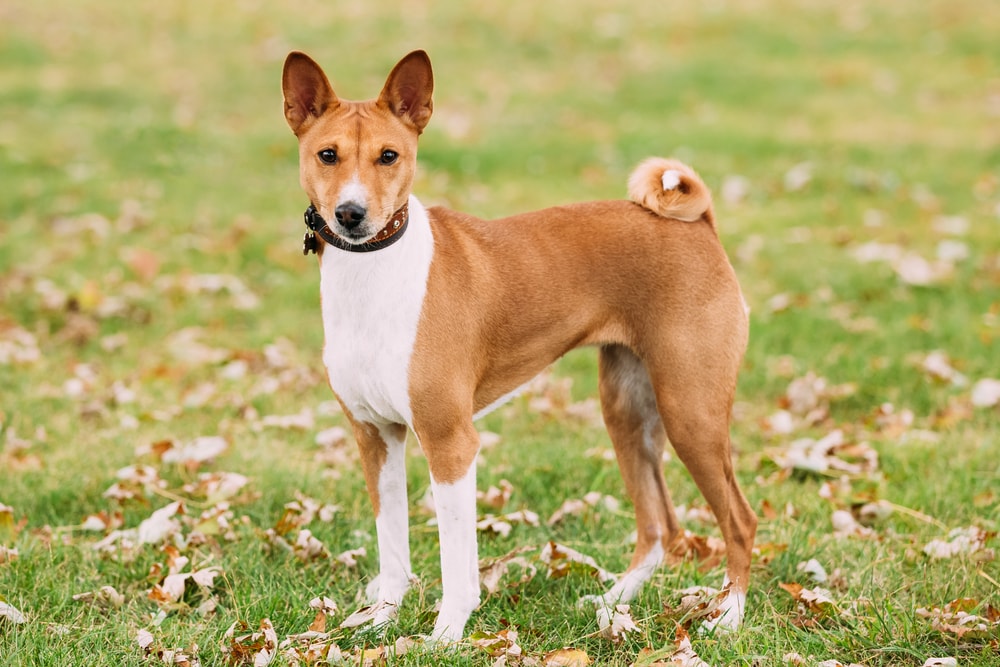
Basenjis are elegant, small dogs from Africa. They’re often described as “barkless.” However, they do absolutely make a noise—they just don’t bark like a “normal” dog. Instead, they “yodel.” They come in a range of different colors, though they usually have some white markings. They also shed minimally, so they only need occasional grooming.
These dogs are extremely independent. They’re loyal to their families and bond closely with them. However, they tend to make their own decisions, which can make them difficult to train. They’re often stubborn and easily distracted. They may be unsure of strangers and require quite a bit of socialization.
16. Chihuahua

Chihuahuas are pretty well-known, largely because they are the smallest dog on the planet—literally. They weigh no more than 6 pounds. Despite being tiny, they have huge personalities—they’re very alert dogs that can also be comical and charming, and feisty and independent.
However, they can become a bit overprotective of their humans, so they require a lot of socialization. Otherwise, it doesn’t take a lot for them to become a bit too feisty.
They aren’t recommended for homes with young children or other dogs, as they can be a bit snappy. However, they do make great companions in cities where there is little room.
17. French Bulldog
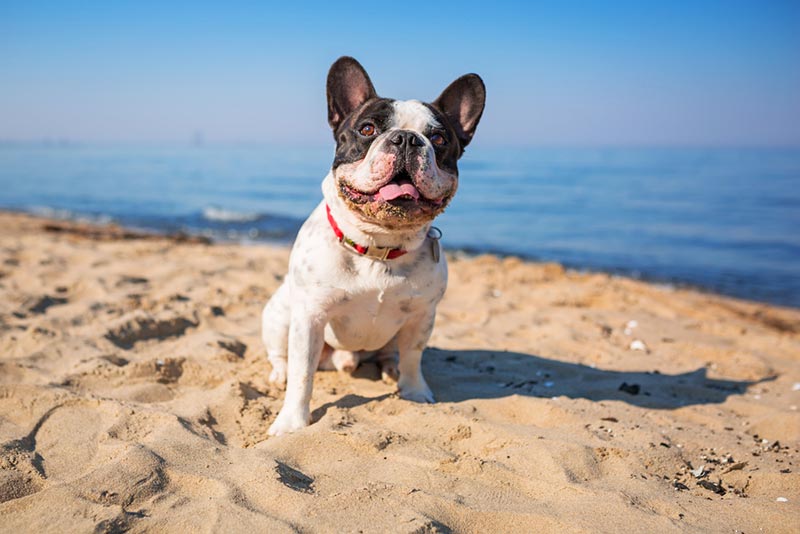
French bulldogs are one of the most popular dogs in the United States. They’re often seen with a sense of luxury, as they are extremely expensive (and were once bred for French nobility). However, these dogs face a lot of health problems due to their shortened snouts. They cannot breathe properly, which leads to all sorts of other issues.
They’re playful and adaptable, able to live in just about any environment. Therefore, they work well for a range of families. They’re often described as friendly and lively, getting along with just about anyone. They don’t bark much, which is often a huge plus for potential owners.
You’ll need to socialize and train these dogs carefully. While they are often friendly, it is possible to pamper them too much, which can lead to them becoming possessive.
Final Thoughts
There are tons of short-haired breeds out there today, both small and large. Many of these dogs shed very little and don’t require much maintenance or grooming. However, this isn’t the case with all short-haired dogs. In many cases, some breeds may shed profusely and require regular grooming for this reason.
See Also:
Featured Image Credit: Yuri Kravchenko, Shutterstock


